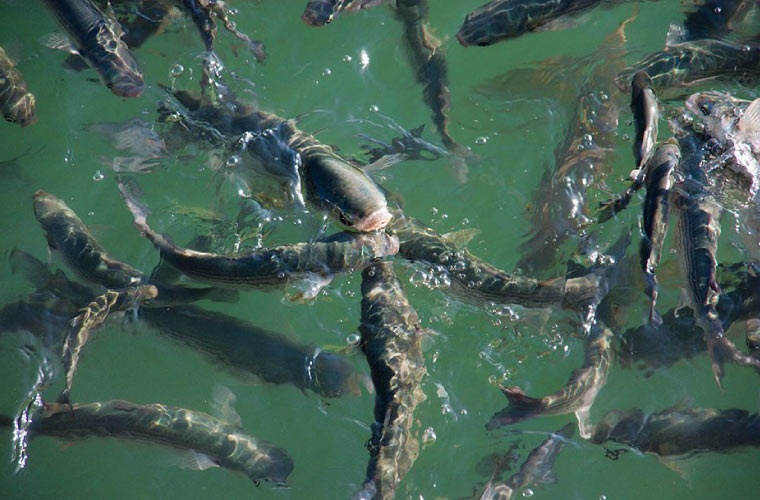
While gilthead seabream and European seabass continue to dominate Mediterranean aquaculture with tens of thousands of tonnes produced each year, the grey mullet barely registers in the statistics. According to the data provided by the Spanish Ministry of Agriculture, Fishery and Food, in 2024, just 13.3 tonnes of grey mullet were produced, almost all of it in Andalusia, with a total value of €61,370. The average first-sale price was €4.62 per kilo-a figure that, far from competitive, relegates this species to the margins.
The comparison is stark: seabream reached 10,821 tonnes in 2024 at an average first-sale price of €6.65 per kilo, and seabass 27,376 tonnes at €8.71 per kilo. Mullet, meanwhile, is widely available in fishmongers at €3-5 per kilo, setting a ceiling that no farm can realistically break.

On paper, grey mullet has clear virtues. It adapts well to plant-based diets during its fattering stage, reduces dependence on animal protein, and tolerates the conditions of brackish and coastal waters. In practice, the numbers simply do not add up. For intensive farming to be viable, feed would need to cost around €1-something that today borders on science fiction. The costs of infrastructure, energy and labour are the same as for seabream and seabass, yet the end price of grey mullet is far lower. Moreover, consumers do not see this species as a premium fish, except in certain processed products such as bottarga.
To these economic constraints must be added a fundamental technical hurdle: the species’ biology is still not fully under control in aquaculture. Unlike established species, mullet production still depends heavily on capturing wild juveniles. Although progress has been made with induced spawning, achieving full sexual maturity in captivity remains a challenge. High larval mortality rates and irregular juvenile development continue to block the commercial closure of the production cycle, according to latest researches.
The only real glimpse of profitability lies in high-value by-products. Mullet roe, processed into bottarga, is a delicacy with strong demand in gourmet markets in Italy, Greece and, to a lesser extent, Spain. There is also some scope for differentiated products such as premium smoked mullet, but these niche markets are far too small to sustain a viable industry.
The realistic alternative is to accept its secondary role. In the Cádiz salt marshes, mullet can be maintained in low-cost extensive systems, or in polyculture alongside seabream, seabass or eel, making use of natural sources without the need for extra feed. It can also play a useful part in integrated multi-trophic aquaculture projects, feeding on residual nutrients and helping to improve the environmental balance of farms. In Mediterranean countries such as Italy, vallicoltura has relied on mullet in this supporting role for centuries, but never as the main attraction.
In short, neither the market nor the biology are on its side. For the foreseeable future, the grey mullet will remain a fish of the salt marsh rather the fish farm.


